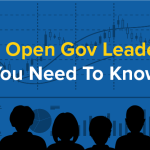Austin’s participation in global Open Government Partnership ignites 5 transparency projects

As the first U.S. city to join Open Government Partnership’s (OGP) global transparency initiative, Austin, Texas, is looking toward international collaboration to elevate its local open data efforts and public dialogue.
The Texas capital is one of 15 localities to join the OGP, a global initiative designed to fight corruption and improve government through transparency and new technologies. The program is reserved for countries, but a 2016 subnational pilot opened it to cities, states and other local jurisdictions.
Austin Mayor Steve Adler and Chief Innovation Officer Kerry O’Connor saw the pilot as an opportunity to institutionalize the city’s open government efforts with new commitments and guidance from the OGP’s international network of officials, technologists and policy experts.
“What you get out of this is a network of people who are thinking of the same issues as you but they’re coming at it from a wildly different perspective because they’re a different country or a different state or a different city,” O’Connor said. “As a consequence, you get some really creative ideas.”
The OGP was founded in September 2011, when the U.S., United Kingdom, South Africa, the Philippines, Norway, Mexico, Indonesia and Brazil drafted and signed the Open Government Declaration to create an international platform for transparency. Now the group’s membership has swelled to 75 countries that have made more than 2,500 commitments to government openness and accountability.
The commitments come through action plans created with input from citizens directly on sites like Github. The U.S. has made nearly 100 commitments and will likely break that number in 2017 as it updates its National Action Plan for the fourth time. Commitments can consist of digital projects, act as policy mechanisms or serve to further existing programs.
Among the additions made in its last update in 2015, the U.S. committed to a redesign of its national web portal, USA.gov, and an initiative to make public records requests more accessible through the Freedom of Information Act (FOIA). New commitments in 2017 include a blockchain-based identification system for immigrants, refugees, and social welfare recipients; the use of artificial intelligence in government hiring; and the opening of data from the U.S. Department of Housing and Urban Development.
O’Connor said she has followed the progress of the OGP in her current role and as an innovation specialist for the U.S. State Department. She liked the freedom found in the action plan process, she said. Instead of issuing one-size-fits-all requirements for transparency, the OGP process affords governments flexibility to collaborate with residents on local goals.
“For governance to work really well, the principles of transparency, accountability, participation, technology, and innovation are critically important,” O’Connor said. “And so I have always been thinking about that kind of a formula for driving organizational change here in Austin.”
Within its action plan, Austin and its residents have set five commitments, including a policy tool to measure how equitable its services and resources are distributed, and a plan to map the effects of homelessness with residents.
The city also committed to organizing an Open and Smart Advisory Group to guide transparency policies and open data projects. O’Connor said Austin decided to launch the advisory group to make sure its decision-making methods for government transparency were not just directed by public officials.
“We really wanted to create the internal governance structure that would hold [the city] accountable for making progress, but also to have a way of reaching out to stakeholders to get feedback and really institutionalize a different kind of process,” O’Connor said.
Austin’s next commitment called for an exploration of the public meeting process and creation of new dataset to report activities. Finally, its last effort is a commitment to develop a platform for the community to track the status of city projects. It’s simple in principle, but O’Connor said there are complexities in the differing project types and department management.
“One of the problems that we have is that it’s really hard to get information from the city on where projects stand and what they’re doing,” O’Connor said. “We have this larger vision of being able to have a platform for any city project so people can get transparency on where they are at.”
Cross-country collaboration
Austin is collaborating with the province of Ontario, Canada, and Mexico to decide on a template that might fit the city. Both governments have designed digital project trackers and O’Connor said the plan is to adapt one or both for an alpha or beta launch before the end of the year.
Exchanges like this are common in OGP’s subnational and national groups. OGP’s Subnational Pilot Program Manager Brittany Giroux Lane said one of the OGP’s core purposes is to be a foundation for these kind of intergovernmental connections. In addition to its network of countries, Lane said the OGP also has a network of more than 2,000 “civil society partners,” a term the group uses to describe an array of nonprofits, academic institutions, advocacy groups and private sector supporters for government transparency. One of these is the Sunlight Foundation and its team of open data and open government policy experts.
“OGP was really founded for the lone reformers, or lonely government civil servants, who really have been passionate or interested in making government more responsive to citizens needs and what we offer to them is a whole network of like-minded folks who really want to learn and do work on these issues.”
Beyond collaboration, Lane said the OGP’s structure of action plans, eligibility commitments and accountability reviews, also provides a strong framework for keep governments focused on to their transparency objectives.
“What community organizations really find valuable in OGP is that it’s a network and a structure that is sustainable and provides stability through political transition or change,” Lane said. “The hope is — and we’ve seen this actually happen — is that through political transition or change OGP can be a guiding force for supporting open government efforts to continue into new regimes or administrations.”
With the success of its subnational pilot, Lane said the OGP is continuing the program in 2018 with its inaugural local governments while opening it to another 15 localities. In Austin, O’Connor said plans are to finish development on the city’s commitments while investigating areas for expansions.
“If we can develop that cadence, and every year we’re making commitments to strengthen our accountability, transparency and civic participation and upping our game on innovation, then that becomes a kind of innovation engine for the city,” O’Connor said. “This work feeds you with inspiration, it gives you new approaches to do things and I think that is really powerful.”

This story was featured in StateScoop Special Report: Open Government (2017)





